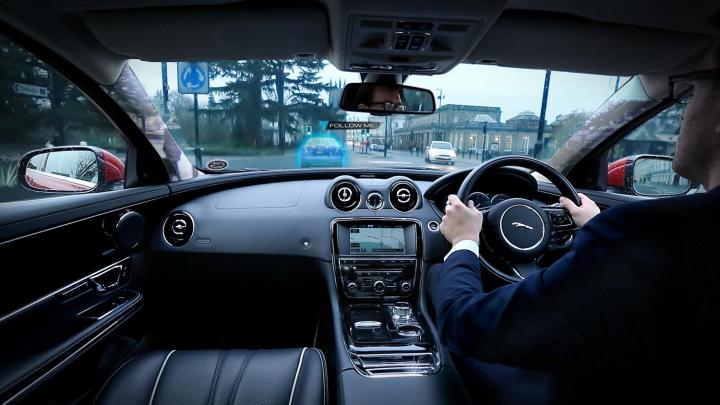
To make maneuvering through the urban jungle less hazardous, JLR has developed a “360 Virtual Urban Windscreen” that uses “transparent” pillars to eliminate blind spots, as well as a prototype navigation system that allows drivers to follow a virtual “ghost car.”
The blind spots caused by a car’s roof pillars can heavily impede visibility, so engineers want to embed screens in them, and use external cameras to provide an image from the same angle.
Different pillars can pull a disappearing act depending on which direction a driver’s head is turned, or whether a turn signal is on, providing theoretically unlimited visibility in all directions.
JLR says this feature could also be combined with a head-up display, as well as cloud connectivity to give drivers information on roadside business, including gas prices.
The stated goal of a “virtual windscreen” is to reduce distraction, but it’s unclear whether being hit with a barrage of holographic advertisements will help in that area.
For navigation, JLR also envisions using a virtual “ghost car” to lead drivers to their destinations.
As with the system unveiled for track driving earlier this year, an image of a car is projected on the road for the real car to follow.
Yet while the original system was designed to give drivers something to race against, this version gives turn-by-turn directions for an added visual element.
That could be helpful, as even the most thorough GPS-generated directions sometimes don’t describe things adequately.
As with Jaguar’s previous Virtual Windscreen and Land Rover’s “Transparent Hood,” the 360 Virtual Urban Windscreen probably won’t go into production anytime soon.
That doesn’t mean it will never be an option on a new car, though, and in the meantime it provides one possible scenario for the future integration of human and machine.
Editors' Recommendations
- Land Rover searches for ways to keep customers and regulators satisfied
- Exclusive: How Land Rover’s designers resurrected the Defender
- Land Rover gives the emblematic Defender a 21st-century makeover
- Jaguar Land Rover is developing this amazing 3D head-up display
- Watch the Red Cross put the new Land Rover Defender to the test in Dubai


